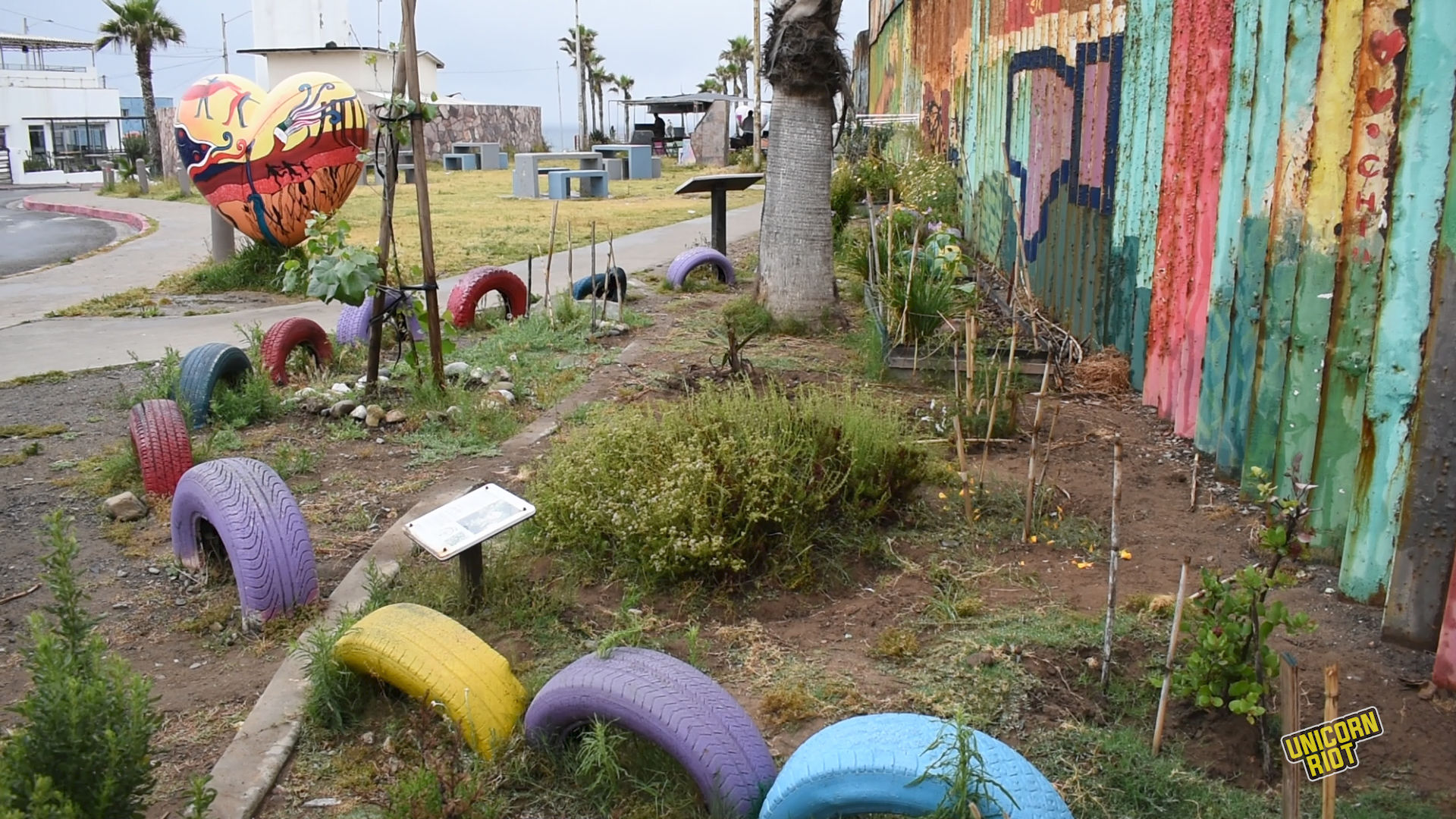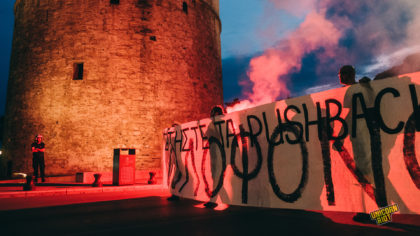Tijuana Groups Protest Border Wall Construction at Friendship Park
Tijuana, Mexico — Eduardo seemed not to notice the soft midday rain slowly dampening his clothes and beading up on the sleeves of his jacket. Just a couple hundred feet from where the Pacific lapped the beach of both Mexico and the U.S., drawing no distinction between the two, Eduardo pointed out the native and culinary plants he and his friends tend to each week.
The corn, fennel and spinach grow just a foot or two from a row of tightly spaced, 18-foot-tall bollards reinforced with tightly woven steel mesh that mark the international border. On the Mexican side, the rusting metal is covered with brightly colored murals that attempt to lend the miles-long barrier a glimmer of humanity.
On this rainy Sunday in mid-June, as Eduardo walked among the beds, pointing out his favorite plants to a group of visitors, about 30 people gathered to protest the increasing militarization of the park and the border wall it surrounds.
Amidst chants of “Parque sí, muros no!” (“Parks, yes, walls, no!”), the group marched about a hundred yards from the garden to a small plaza overlooking the beach and barbed wire-topped border wall stretching out into the Pacific. Carrying handmade cardboard signs reading “Abre el Parque!” (“Open the Park!”) and “No Muros en Nuestro Parque” (“No Walls in Our Park”), the group peered out over the 18-foot-tall border wall at friends gathering on the San Diego beach to join the protest from another country.
“Hola amigos!” they shouted into the megaphone.
The group joining on the San Diego side was separated from their comrades in Mexico by several hundred feet of no man’s land stretching between the two layers of walls–one of which is still under construction. But for the Department of Homeland Security, the two countries are still not separate enough.
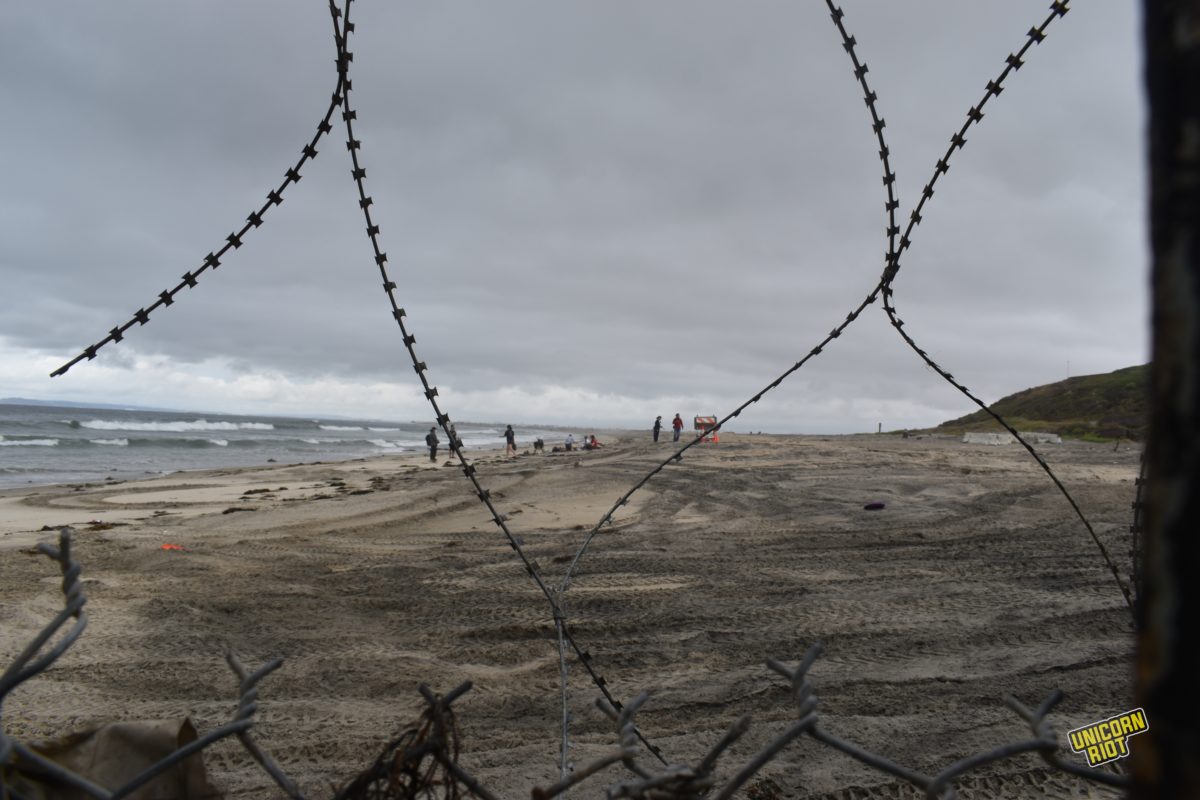
Under the direction of the Biden administration, the Department is currently working on expanding the 30-foot-tall wall on the U.S. side. After that project is completed, they’ll tear down the current wall that marks the international border, and replace it with a new, taller one.
“We’re kind of worried because their enforcement measures stop at nothing,” said Daniel Watman, a member of the Friends of Friendship Park, a community organization that’s demanding the reopening of the park. “If they could have 40, 50 foot walls they would do it. And they’ve just put in these 30-foot walls.”
At 2 p.m. every Sunday, the Friends of Friendship Park, in collaboration with La Iglesia Fronteriza and other groups, hold a protest demanding the demilitarization of the border, a halt to border wall construction, and the reopening of the park.
Before 2020, the area between the two walls had been opened from 10 a.m. to 2 p.m. on Saturdays and Sundays, allowing up to 25 people to approach the border wall from the U.S. side and talk through the mesh grating to their loved ones in Mexico. “It was kind of like a prison visit or something,” said Watman.
But with the COVID-19 pandemic as an excuse, the Border Patrol ended those visits in 2020. In the three years since, as the rest of the country and the world have largely returned to normal life, the gates on the U.S. side remain closed.
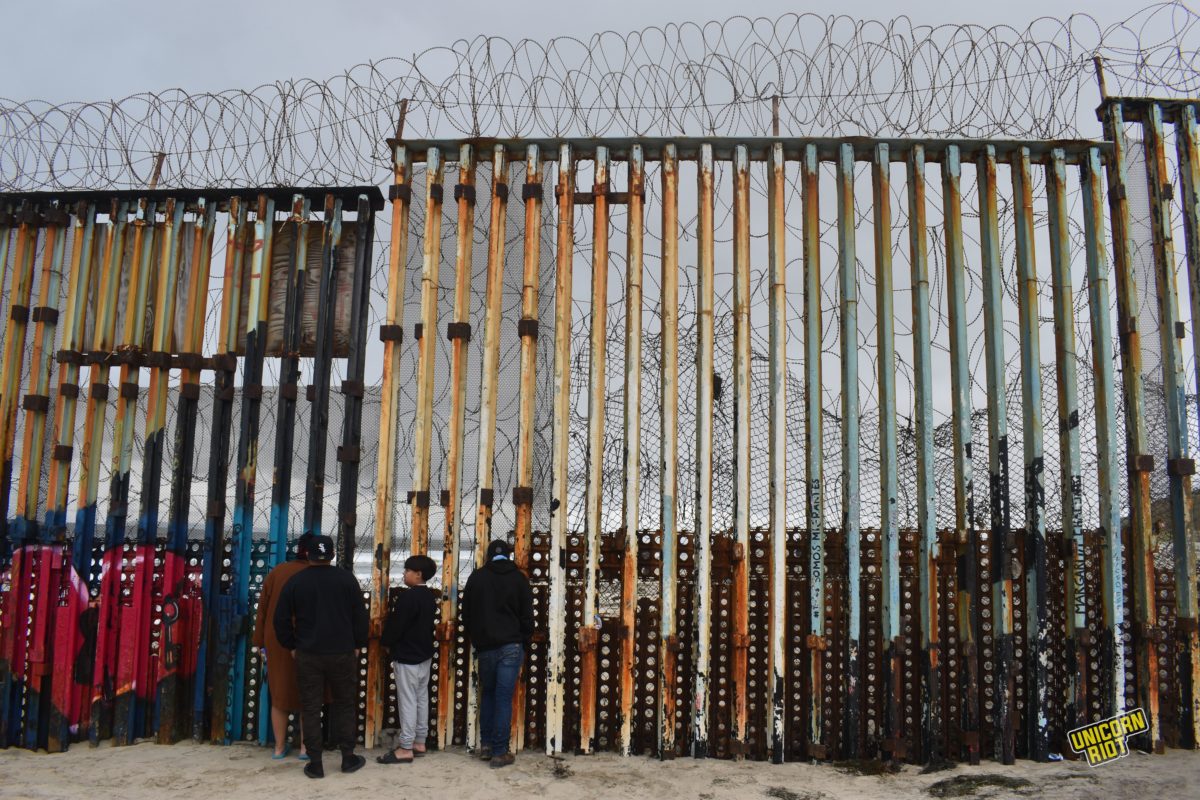
“The Department of Homeland Security really doesn’t take things like gardening or border church or families or friendship across the border – which is what the space is supposed to be about – into account,” said Watman. “Their whole thing is just enforcement, that’s what they’re about. And it’s kind of a synonym to security for them. But for us, those other aspects are part of security too.”
The current state of the border between San Diego and Tijuana marks the high point in a steadily increasing process of militarization and division that began in 1849, when the US-Mexico Boundary Commission met to establish an official separation between the two countries. Until the 1970s, the border they established in the southwestern-most corner of the continental U.S. remained essentially open, with only a 5-foot tall barrier of loosely-strung barbed wire stretching between steel fencing posts along the beach.
Since 2009, Daniel explained, the border that cuts through Friendship Park has become increasingly militarized. “Where that 18-foot fence is, they just put that in, in 2009,” said Watman, pointing through the border wall to the secondary wall beyond. “Before that there was nothing on the U.S. side.”
Without an additional wall keeping those in the U.S. from approaching the border, people would come to the wall to sit and share meals with their loved ones separated from them by immigration status.
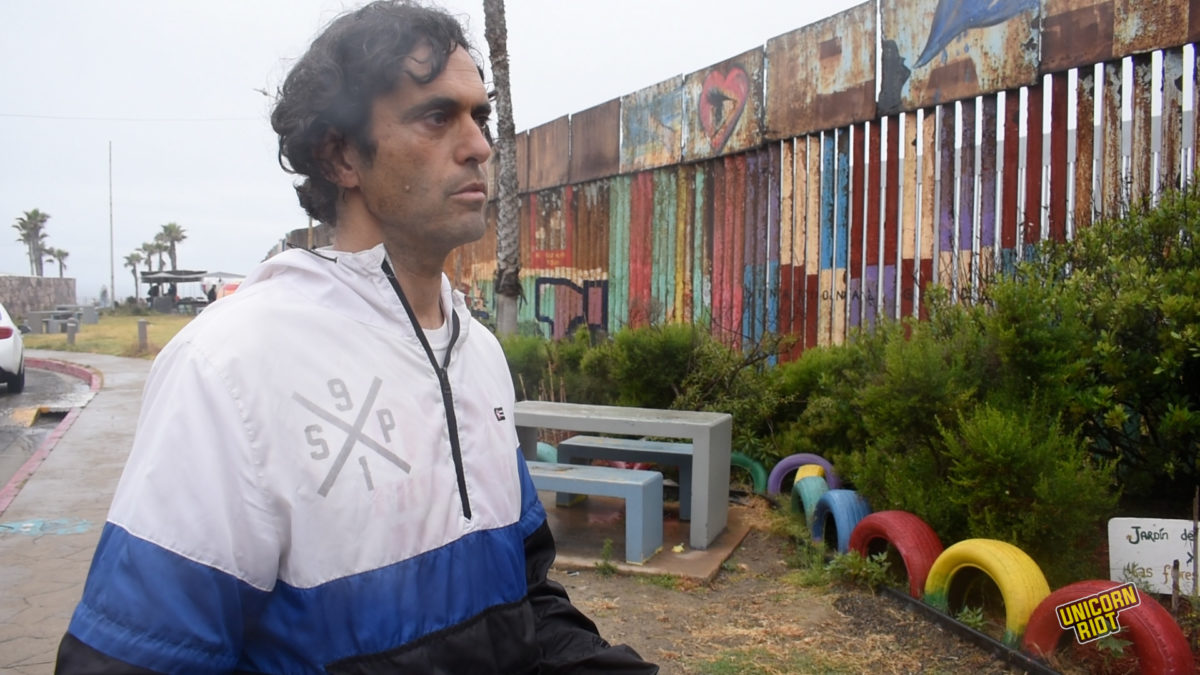
“Before they closed the park, people could come up here to the wall,” said Lucia Torres, a member of La Iglesia Fronteriza who attended the Sunday protest, speaking in Spanish. “And we could chat with them and we could even touch each other with our fingers, despite the fence. Say hi to each other. They could chat with their families. Families that can’t enter and those who can’t leave would have a really important meeting point here. But now, it’s being limited.”
In the face of this increasing militarization and division, the Friends of Friendship Park is trying to offer a different vision of what this land could be.
“They just keep on insisting on this. But really this land belongs to the Kumeyaay,” said Watman, referring to the Indigenous group native to what is now the Tijuana/San Diego area. “And so we want to send the message that this land shouldn’t be divided and it should be recognized that we belong to the Earth on both sides of the border…And that the idea of this park, which is friendship, should be maintained.”
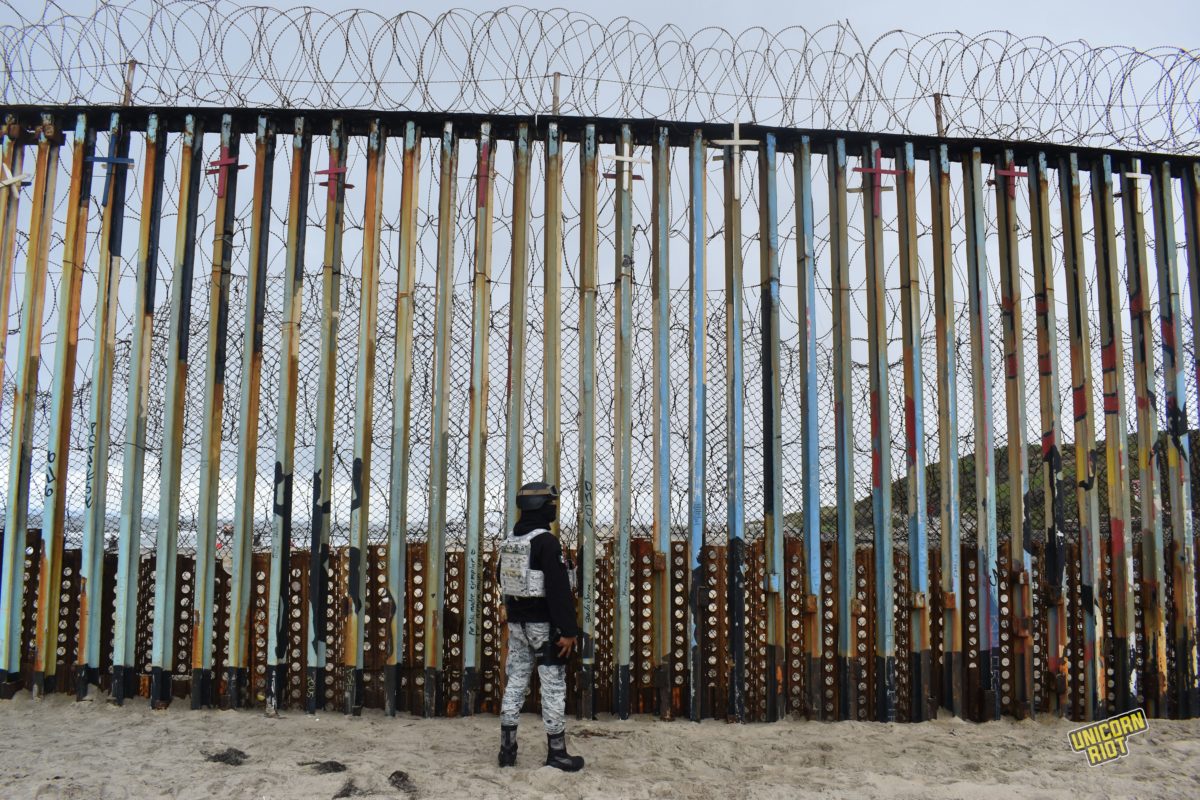
See our mini-doc Crisis: Borderlands, on the U.S. / Mexico border crisis, released in 2017.
Please consider a tax-deductible donation to help sustain our horizontally-organized, non-profit media organization:

Follow us on X (aka Twitter), Facebook, YouTube, Vimeo, Instagram, Mastodon, Threads, BlueSky and Patreon.
